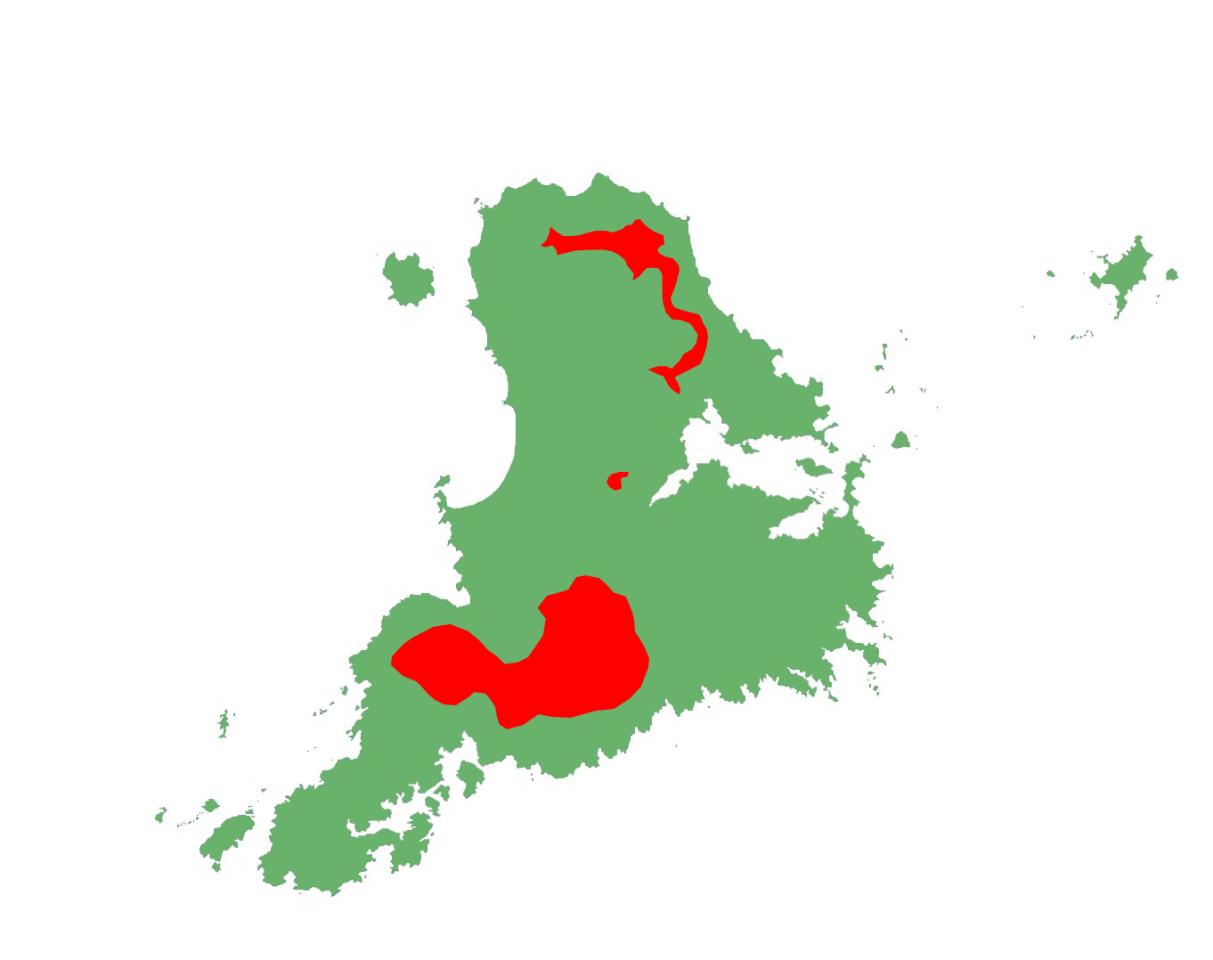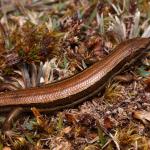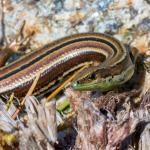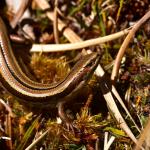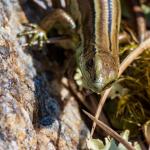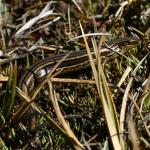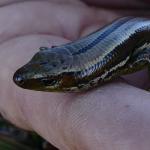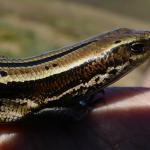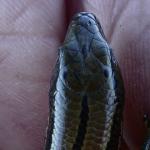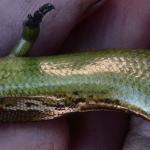- Home
- Herpetofauna Index
- Native
- Oligosoma Stenotis
Oligosoma stenotis
Small-eared skink
Oligosoma stenotis
(Patterson & Daugherty, 1994)
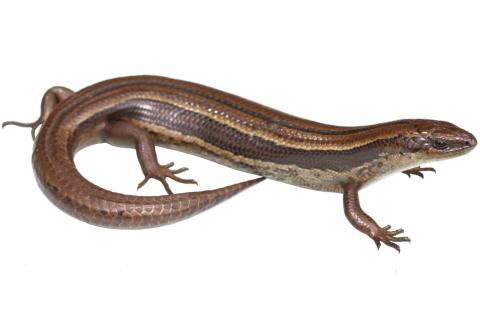
Length: SVL up to 75mm, with the tail being equal to or longer than the body
Weight: up to 6 grams
Description
A strikingly beautiful, and rare skink from the sub-alpine regions of Stewart Island.
Small-eared skinks are often characterised by a distinctive black mid-dorsal stripe edged by yellow, which runs from the neck to the base of the tail (although this may be completely absent in some individuals), the presence of a keeled tail, and their relatively small ear openings. Upper surfaces are yellow-brown to green-brown, with the aforementioned mid-dorsal stripe, a brown band bordered by cream or yellow stripes is present on the sides. The lower surfaces range from grey-brown to yellow, with some individuals having sparse dark flecking.
Distinguished from co-occurring Oligosoma species by the presence of the keeled tail, small ear openings, and the prominent mid-dorsal stripe.
Life Expectancy
Unknown.
Distribution
Confined to the alpine and sub-alpine regions of Stewart Island.
Ecology and Habitat
A diurnal species, occurring above the treeline in the sub-alpine zones of Stewart Island. They are often found associated with boulderfield, tussock grassland, and herbfield habitats. It is possible that, as with some other species of small South Island skinks, they utilise invertebrate burrows as refugia (pers. comm Tony Jewell).
Social Structure
Solitary.
Breeding Biology
Viviparous. Little is known about their breeding biology; however, when studying the animals for description, one of the study females gave birth to 2 live young in November, indicating either a much earlier breeding season or a much longer gestation period compared with our other skink species. Neonates measure around 26mm SVL, and weigh about 0.2g at birth.
Diet
As with most of our native skinks, this species is omnivorous, feeding on both invertebrates (spiders, insects and amphipods), and small fruits.
Disease
Largely unknown, but likely to be a host for several lizard mites and ticks.
Conservation status
Prior to the most recent threat classification, this species was considered to be "naturally uncommon", having a fairly restricted distribution; only occurring in the sub-alpine zones (high altitude herbfields and fractured rock slabs) of Stewart Island. The implication is that the species had a relatively stable population, due to the ongoing conservation management (pest control) of southern New Zealand dotterel (Charadrius obscurus obscurus) within the skink's preferred habitat. However, according to the most recent threat classification in 2021, opportunistic observations within this habitat suggested that a significant decline had occurred. Thus, the threat status was reassessed to Threatened – Nationally Vulnerable.
Interesting notes
The small-eared skink's scientific name, much like its common name, refers to the size of the ear opening; stemming from the Greek words stenos, meaning "narrow", and otos, meaning "ear".
References
van Winkel, D., Baling, M., & Hitchmough, R. (2018). Reptiles and Amphibians of New Zealand: A Field Guide. Auckland University Press, pp376.

